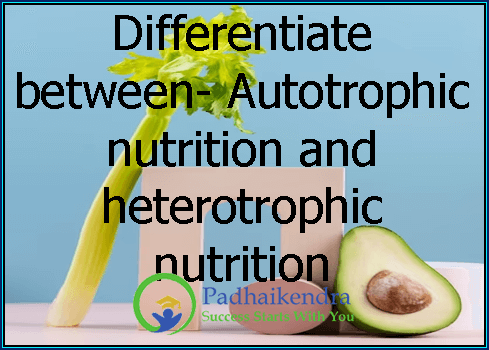Autotrophic nutrition and heterotrophic nutrition are two different modes of nutrition in living organisms.
Autotrophic nutrition is a mode of nutrition in which organisms are able to synthesize their own food using simple inorganic molecules and energy from the sun or other sources. Examples of autotrophic organisms include plants, algae, and some bacteria. These organisms use a process called photosynthesis to convert carbon dioxide and water into organic molecules such as glucose, which they use as a source of energy.
Heterotrophic nutrition, on the other hand, is a mode of nutrition in which organisms obtain their food by consuming other organisms or organic matter. Examples of heterotrophic organisms include animals, fungi, and some bacteria. These organisms obtain nutrients by breaking down organic molecules such as carbohydrates, proteins, and fats, which they ingest from their environment.
In summary, autotrophic nutrition involves the synthesis of organic molecules from inorganic molecules and energy from the sun or other sources, while heterotrophic nutrition involves the consumption and breakdown of organic molecules from other organisms or organic matter. Autotrophic organisms are typically found in environments where light and inorganic nutrients are readily available, such as on land and in bodies of water, while heterotrophic organisms can be found in a wide range of environments, including land, water, and air.





